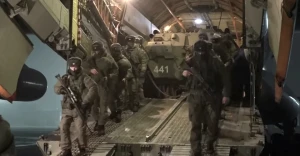
Greatest art theft of Russia’s war against Ukraine: How the invaders plundered Kherson museum
"Fishermen by the Sea" by Ivan Shulha became the hundredth painting stolen by Russians that was identified by the Kherson Regional Art Museum staff named after Oleksii Shovkunenko. They have been monitoring the images for two years now, trying to locate the works that the invaders took away in 2022 under the supervision of armed guards. With the support of their collaborators, the Russians had been planning their looting for several months, interrogating employees and conducting searches.
The traces of Russia's "demilitarization and denazification of Ukraine" are hard to miss just by looking at the building of the Kherson Art Museum. The façade of the architectural monument, which was once the City Duma (Council), is riddled with shelling, with windows smashed by blast waves and covered with plywood plates. However, the most important "witness" to the brutal presence of the occupiers here is the emptied museum storage.
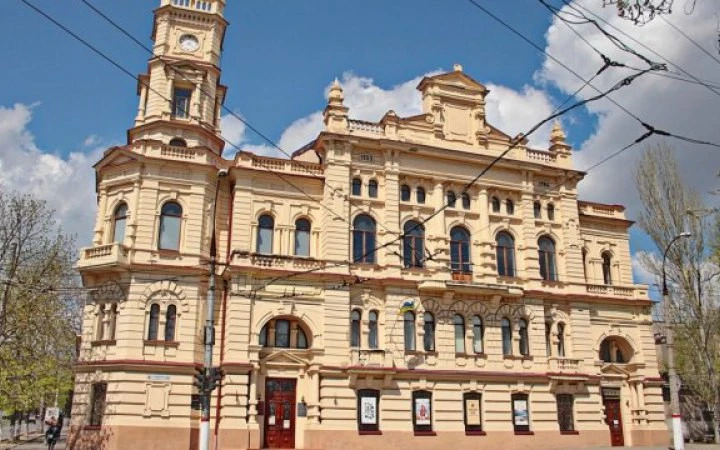
photo: Kherson Art Museum before restoration
"The sculpture is heavy, it's harder to transport, but they took almost all the graphics. It takes a lot of effort to take out a large canvas, and it will be one museum piece while taking a folder with graphic works requires less energy," says Larysa Zharkykh.
The woman works as the head of the museum's public information department.
I called her when I was preparing an article about Ukrainian artists labeled Russian. At first, we were supposed to talk about Burliuk and Pimonenko (Ukrainian artists misrepresented as Russian) but immediately after I said, "I want to talk to you about stolen art," Larysa responded briskly: "You reached the right person. Our example is illustrative in this case."
It is illustrative because Burliuk or Pimonenko ( i.e. their works) were physically stolen from the museum. Along with over 10,000 other artworks.
Trucks near the museum
Long before the Ukrainian Armed Forces liberated Kherson, there were reports from the city that the Russian soldiers were preparing to escape and were taking away their loot. At the time, Ukrainian grain, office equipment, and medical equipment were exported to "safer" occupied territories or to Russia. The invaders even took away monuments to Suvorov and Ushakov and the bones of Catherine the Great's lover, Grigory Potemkin.
on video: trucks parked near the museum
Around the same period, Smithsonian Institution researchers used satellites to capture photos of trucks on Soborna Street, right next to the Kherson Art Museum. The time, place, and social media posts coincide, so it was probably the moment of the robbery.
"Starting from October 31 until about November 4, 2022, there were reports that the Kherson Museum was being robbed. We looked at satellite photos and this is one of those rare cases when looting could actually be recorded," Smithsonian Fellow Katherine Hansen said in an interview with Voice of America. "One of the other things we try to highlight in our reports is that the looting appears to have been organized."
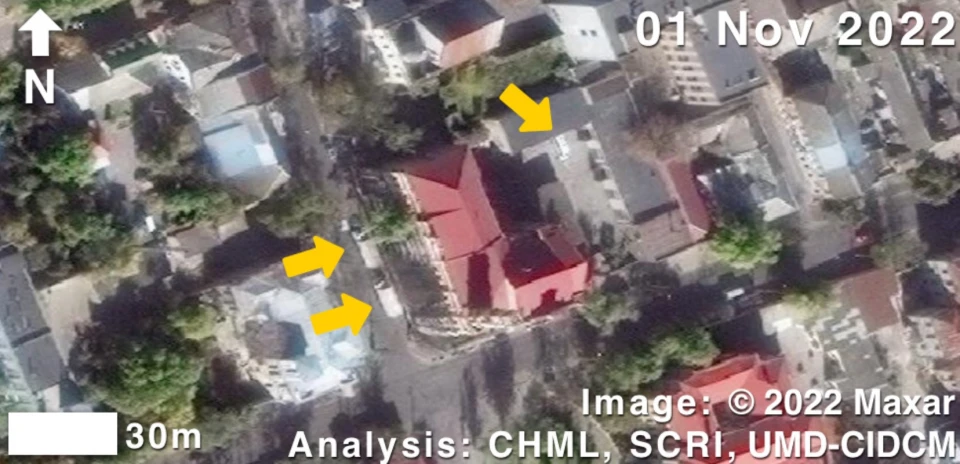
And it has been in the works for a long time, the museum staff insists.
The institution at the time was closed for restoration since the fall of 2021. So the former city landmark and center of cultural life met the occupation with the ceiling dismantled and scaffolding around the building.
The museum's director, who left Kherson in May 2022, came up with a legend for the invaders: there are no works of art in the building, they were taken away before the restoration. Thus, only the director, who evacuated to the Ukrainian-controlled territory, knows about their whereabouts. The employees agreed to follow this version.
"In May, people in civilian clothes came to the museum, some of them had weapons and asked where our collection was," says Larysa Zharkykh. "They were obviously familiar with museum affairs, so they could have been collectors or museum workers. People knew specific terms, they were interested in whether the collection was kept in proper conditions, and what the temperature and humidity conditions were. And they offered to assist in the transportation of the collection to Crimea or Russia."
After hearing the story of the already evacuated works from the Art Museum staff, the guests did not break down the door but promised to return.
Russia’s appointees searched for documentation and interrogated a museum employee
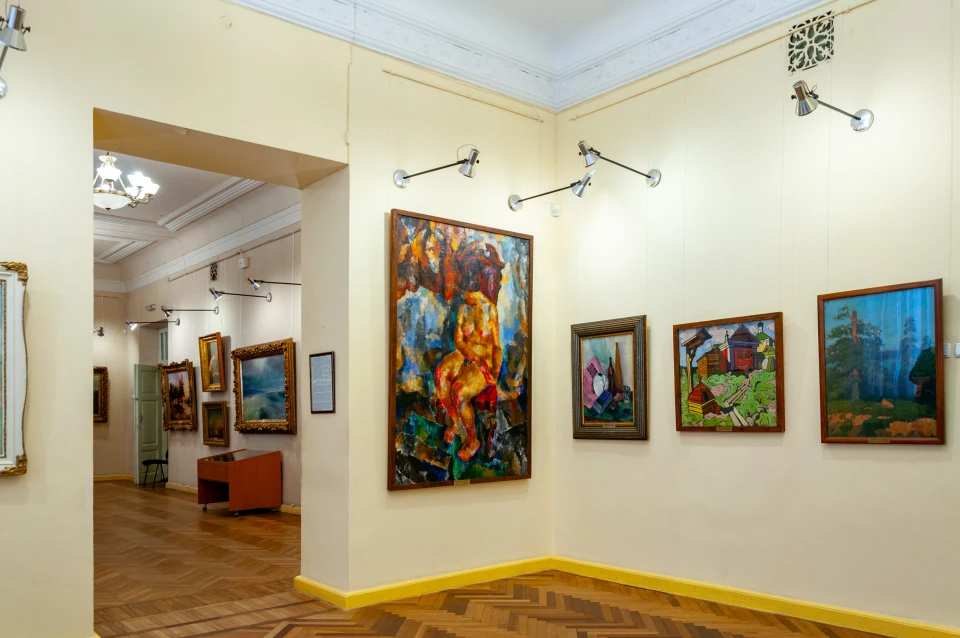 photo: Kherson Art Museum before restoration
photo: Kherson Art Museum before restoration
In July, people wearing plain clothes returned to the museum officially, accompanied by FSB officers. The occupiers put their own director in charge. Natalia Desyatova, who had no museum experience, and whose only "cultural" background was her job as a singer in a local restaurant, became the new director.
At that time, the stories of the employees were not helpful anymore. In addition, the information about the collection had already been betrayed by employees intent on cooperating with the new government.
"I devoted 45 years of my life to gather the collection, and the people who drank coffee at the workplace handed it over to the occupiers," director Alina Dotsenko would later say in an interview with Ukrayinska Pravda.
Employees who were not loyal enough had a hard time. The new administration immediately started searching for documentation. The woman who was in charge of the collection simply disappeared for several days. When interrogations yielded no results, occupiers searched her home.
"It was hard for us to stay calm. Only later did she let us know that she was alive," Zharkykh recalls.
The new administration began to simulate a flurry of activity by organizing various exhibitions in the building of the Artists' Union, as the museum without a ceiling was not very suitable for hosting events.
They left empty frames and two large portraits of Lenin
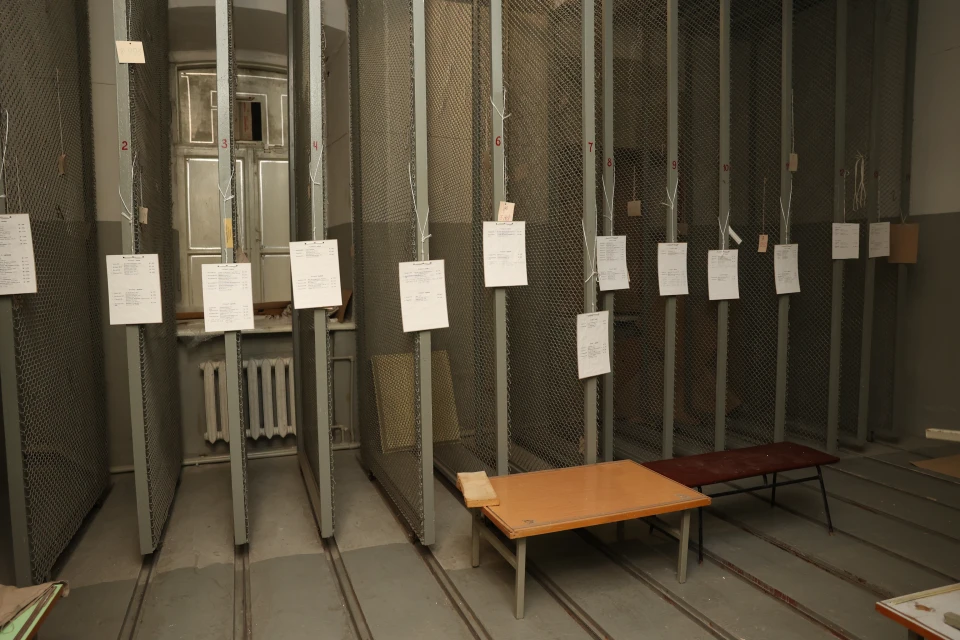
"They tried to take out everything of cultural and financial value," Larysa Zharkykh concludes. "Before the robbery, they published an article where they savored what would soon become 'part of the Russian museum fund'. In the Russian Izvestia, while analyzing 4 museums under occupation - Kherson, Donetsk, Berdiansk, and Luhansk - they counted 44,000 works of art with a total value of over a million rubles. In the Kherson Art Museum's collection, they drew attention to 17th-century icons and masterpieces by major Russian painters."
Also on October 30, the so-called Ministry of Culture announced the evacuation of artworks in its social media channel, stating that this is how they are saving the collection from the Kyiv regime, which will bomb everything.
The next day, armed men surrounded the museum.
"On November 1, they locked Hanna Skrypka (the keeper of the Kherson Art Museum's collections) in the museum to compile lists. And she heard that this cargo was going to Crimea," Zharkykh says.
First and foremost, the permanent exhibition was taken away, and the works of artists who are called "Russian classics," such as Ivan Aivazovsky and Mikhail Vrubel, works by Western painters, and ancient icons were "evacuated."
"Will 6,000 be enough for us? No, it's not enough. Ten will be fine," Larysa recounts a conversation between the occupiers overheard by Hanna Skrypka during the forced evacuation of artworks. "In other words, they were fulfilling a plan on how many exhibits to take away."
Works by Ukrainian artists were also stolen, including almost all of Oleksii Shovkunenko's works that were kept in the museum, Mykola Pymonenko's paintings, graphic works by David Burliuk, and pieces by other artists.
Among the survivors, there are two large portraits of Lenin. "Logically, they should have saved their 'leader of the world proletariat' from the Banderites. But for some reason they abandoned him," says Larysa Zharkykh.
Many paintings were simply damaged, some were cut out of their frames - like classic robbers. If initially they tried to follow the rules at least somehow, later priceless artworks were simply thrown into trucks without license plates.
"People said that the Russians treated washing machines better," Zharkykh recounts. The looters didn't seem to have time to transport delicate watercolors under glass and in frames, or to wear gloves.
Larysa recounts Hanna Skrypka's words about how the people who were involved in the "evacuation" were packing the graphic works with their bare hands, damaging the images in the process. "They seem to be professionals, they seem to understand how the process of transporting artworks should look like," a museum worker is outraged.
On November 4, the occupiers completed their marauding. The very next day, the Kherson Art Museum staff saw familiar works in photographs for the first time.
"We use different images to identify the pieces that are now in the Central Museum of Tavrida (the museum is located in Simferopol - author). Most of what we have seen are Ukrainian artists' artworks," says Larysa Zharkykh and adds: "This robbery is definitely an attempt on Ukrainian cultural heritage."
The director of the Central Museum of Tavrida, Andrei Malgin, was also in Kherson during the robbery.
"We have 10,000 pieces and we are inventorying them. The Crimean Ministry of Culture arranged for us to keep them here until they tell us otherwise," he told the Spanish newspaper El País. According to Malgin, his museum is keeping the collection for "protection."
Pursuing stolen art
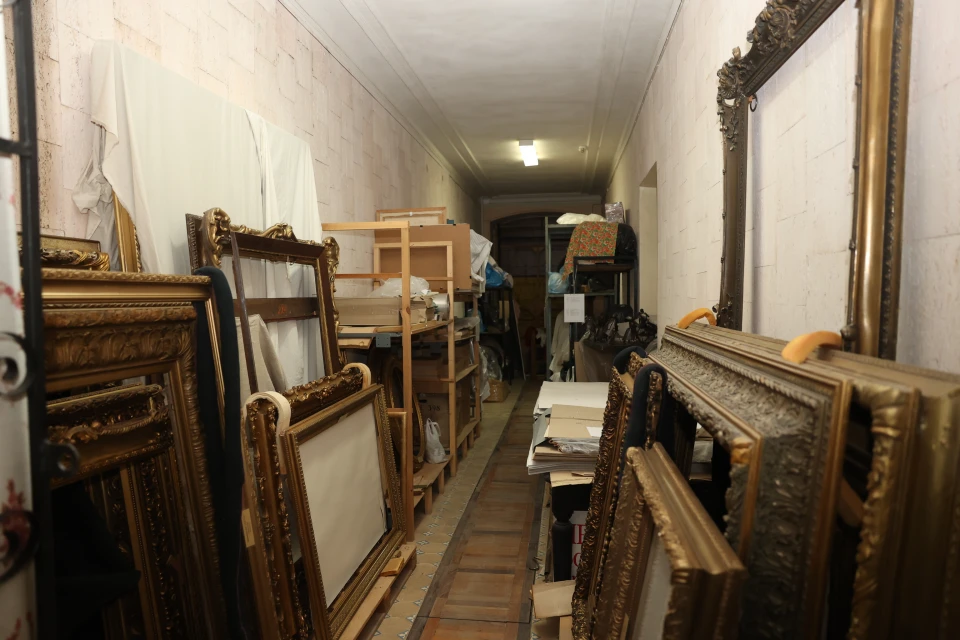
photo: empty frames in the corridor of the Kherson Art Museum
The Russian plunder of Ukrainian museums has been called the largest theft since World War II. The Ministry of Culture has estimated almost half a million stolen artworks, about 15,000 of which belong to museums in Kherson region.
The National Agency for the Prevention of Corruption managed to identify 109 objects stolen by Russians and another 68 that were probably appropriated by representatives of the Russian Federation, LIGA.Life writes. The museum itself reports about the same number on its Facebook page. Now, their feed has much fewer event announcements, but much more stories about stolen art.
It is hard to predict what the procedure will look like in the future. Now Ukrainian law enforcement and art experts are working to collect evidence in order to bring the perpetrators to justice. International art organizations are also involved.
"Everyone in the art market is on red alert to look out for this material," says said James Ratcliffe, general counsel of The Art Loss Register, organization that searches for stolen art, in an interview with the NYT. "Every auction house that sees material from Ukraine is going to start asking a lot of questions."
The Ratcliffe's organization has already registered over 2,000 items from Ukraine that are believed to have been stolen and are at risk, including paintings from the Kherson Art Museum.
Will Ukraine ever be able to get the lost art back? Thousands of artworks and artifacts stolen by the Nazis in the 1940s have yet to be recovered. Many paintings, icons, or sculptures from Kherson may end up in private collections.
By the way, the Russians illegally exported three paintings by Ivan Aivazovsky: "The Storm Is Coming," "View of Odesa on a Moonlit Night," and "The Sea." So far, however, these paintings by the famous marine artist have not been seen in photos from Simferopol, nor from other museums.
Now we can only hope for the effective work of Ukrainian diplomats, art organizations and the military.
"I emotionally said on several broadcasts that only a destroyed Kerch bridge would stop further plunder. So that they have nowhere to retreat to. Because if they do, they will start clearing out Simferopol and our artworks at the same time," Alina Dotsenko told Ukrainska Pravda.
- News








